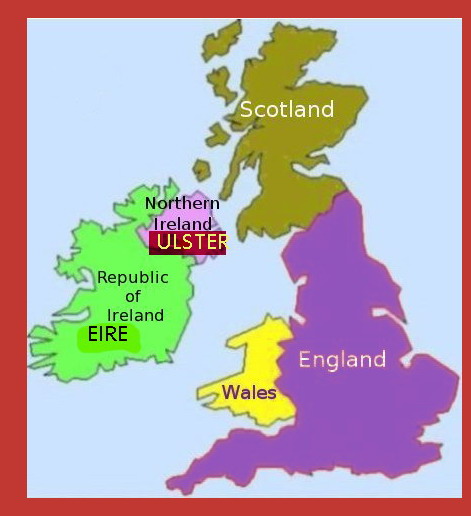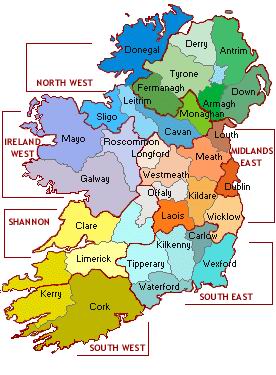1922-1948 How Ireland Became the Republic of Ireland


Main Source:
https://en.wikipedia.org/wiki/Irish_War_of_Independence
The peoples of Celtic-culture in Ireland were related to those in Britain. From the 500s CE many Iriand tribes moved to Wales and Scotland. in the 700s Scandinavian Vikings settled along the Irish coast and founded most of the Irish towns known from latter days. The Vikings also ruled over and settled in parts of Britain.
In 1169 the Normans of England conquered part of |reland. Henry VIII of England proclaimed himself King of Ireland in 1541. In the following centuries English and Scottish Protestants settled in Northern Ireland intermixing with the locals and creating a new breed of people. From the 1600s nearly all of Ireland was in the possession of English landlords who were mostly Protestant lording it over catholic tenants. Ireland had its own Parliament from 1297 until 1800 Only non-Catholics landowners were admitted. Ireland was ruled from Britain. Catholics were emancipated in 1829. In 1846 the Great Famine killed more than a million Irishmen with another million leaving for America. The population declined.
The population of Ireland in 2021 was approximately seven million with 1,903,100 in Northern Ireland and 5,123,536 in the Republic of Ireland.
Britain passed the Home Rule Act in 1914. This would have given Ireland self-rule but it was suspended for the duration of WW1. In 1916, the Easter Rising in Dublin turned Irish public opinion against the British establishment after the execution of the leaders by British authorities.
In the December 1918 election, republican party Sinn Fein won a landslide victory in Ireland. On 21 January 1919 they formed a breakaway government (Dail Eireann) and declared Irish independence.
A war of sorts with Britain ensued in which over more than 1500 Irishmen were killed and many more interned..
In May 1921, Ireland was partitioned under British law by the Government of Ireland Act, which also created Northern Ireland with its own parliament.
A ceasefire began on 11 July 1921. The post-ceasefire talks led to the signing of the Anglo-Irish Treaty on 6 December 1921. This ended British rule in most of Ireland and, after a ten-month transitional period overseen by a provisional government, the Irish Free State was created as a self-governing Dominion on 6 December 1922. It lasted until 1937. Northern Ireland remained within the United Kingdom.
The Irish Civil War (1922 - 1923)[ followed the Irish War of Independence and accompanied the establishment of the Irish Free State, an entity independent from the United Kingdom but within the British Empire. The Provisional Government (which became the Free State in December 1922) supported the terms of the treaty, while the anti-Treaty opposition saw it as a betrayal of the Irish Republic that had been proclaimed during the Easter Rising of 1916. The civil war was waged between the Provisional Government of Ireland (backed by Britain) and the anti-Treaty Irish Republican Army (1922 - 1969) (IRA) over the Anglo-Irish Treaty.
Michael Collins, the Irish finance minister and Irish Republican Brotherhood (IRB) president, was prominent in the in the Provisional Government.
The Civil War was won by the pro-treaty National Army, who first secured Dublin by early July, then went on the offensive against the anti-Treaty strongholds of the south and west. The guerrilla phase of the Irish Civil War lasted another 10 months, before ending the conflict.
There followed a general election which the Pro-Treaty Sinn Fein party won.
Under the Statute of Westminster 1931, the British Parliament gave up its right to legislate for members of the British Commonwealth.
in 1932, the Fianna Fail under Eamon de Valera formed a new government.
In 1937, they passed a new constitution, which made a President the head of state, did not mention any allegiance to the British monarch, and which included a territorial claim to Northern Ireland. The following year, (1938) Britain returned without conditions the seaports that it had kept under the terms of a previous treaty.
Finally, in 1948, a coalition government, containing elements of both sides in the Civil War (pro-treaty Fine Gael and anti-treaty Clann na Poblachta) left the British Commonwealth and described the state as the Republic of Ireland.
Irealnd in Medieval Times. Airgialla was also known as Oriel.
